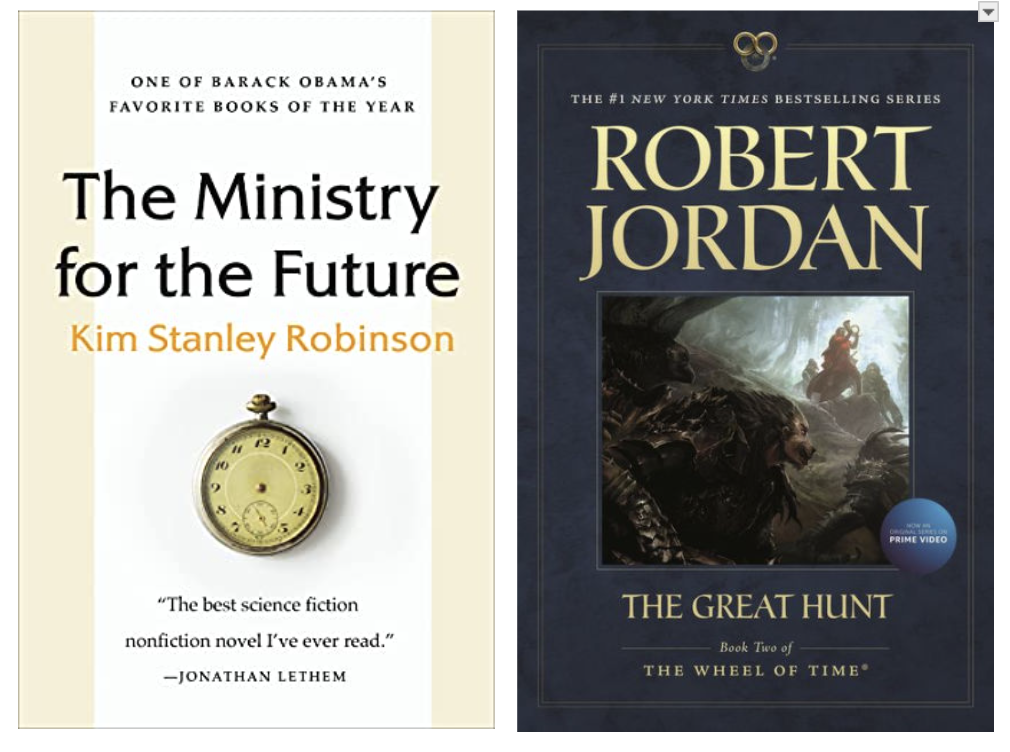Red Stockings and Trolley Dodgers
I am teaching a new elective class this year called American Sports History. One of the many benefits of teaching a new class is that I get to learn a lot. The early history of baseball was one of our early topics and while teaching I came across the origins of some team names that I had always wondered about. This was great because I am a huge sports fan. It was also cool because I often bring up team names while teaching history since so many names are derived from historical connections with their cities and regions. Obvious examples include; the New England Patriots, the Philadelphia 76ers, the San Francisco 49ers, and the Portland Trailblazers. When I point these out in class I get the pleasure of seeing many lightbulbs go off.
The origin stories I recently learned about have to do with the Cincinnati Reds and the Los Angeles Dodgers. I always wondered why a midwestern team would have a name associated as a political slur. Their original name was the Red Stockings, and they are considered to be America’s first professional team. They became the Reds eventually, but during the early days of the Cold War, they did actually change their name from the Reds to the Redlegs. They changed back to Reds in 1959.
Most baseball fans know that the LA Dodgers started in New York and were known as the Brooklyn Dodgers. But dodgers of what? Seems like a random team name. Apparently, before they were the Dodgers, they were the Greys, the Bridegrooms, and the Robins. In the 1930s, with trolley’s becoming ubiquitous, they were renamed the Trolley Dodgers. They eventually moved to the West Coast, and the local connection of the name became shrouded to most.
For the record, the original names (and locations) of my favorite teams are:
Athletics: Philadelphia Athletics (1901-1954) → Kansas City Athletics (1955-1967) → Oakland Athletics (1968-2024) → (Sacramento) Athletics (2025-2027, temporary while new stadium built) → Las Vegas Athletics (2028-present, planned)
Raiders: Oakland Raiders (1960-1981) → Los Angeles Raiders (1982-1994) → Oakland Raiders (1995-2019) → Las Vegas Raiders (2020-present)
Kings: Rochester Royals (1945-1957) → Cincinnati Royals (1957-1972) → Kansas City-Omaha Kings (1972-1975) → Kansas City Kings (1975-1985) → Sacramento Kings (1985-present)
Stanford Cardinal: Stanford University, Stanford, California (1891-present) - The team name changed from “Indians” (1930-1972) to “Cardinal” (1972-present), referring to the color cardinal red, not the bird.

Dandelions
Instead of a simple, beautiful sentence, today I want to share a small beautiful paragraph. This is from a book published this year by Suleika Jaouad, titled The Book of Alchemy. It’s a collection of short pieces in which creative people explore different aspects of the creative process. What struck me about the quote is how it connects an experience we all know — the disintegration of a dandelion cluster — with the inevitable changes we face in our lives. The wind is going to blow — but where will it take our ideas and our dreams? And how will our actions land?
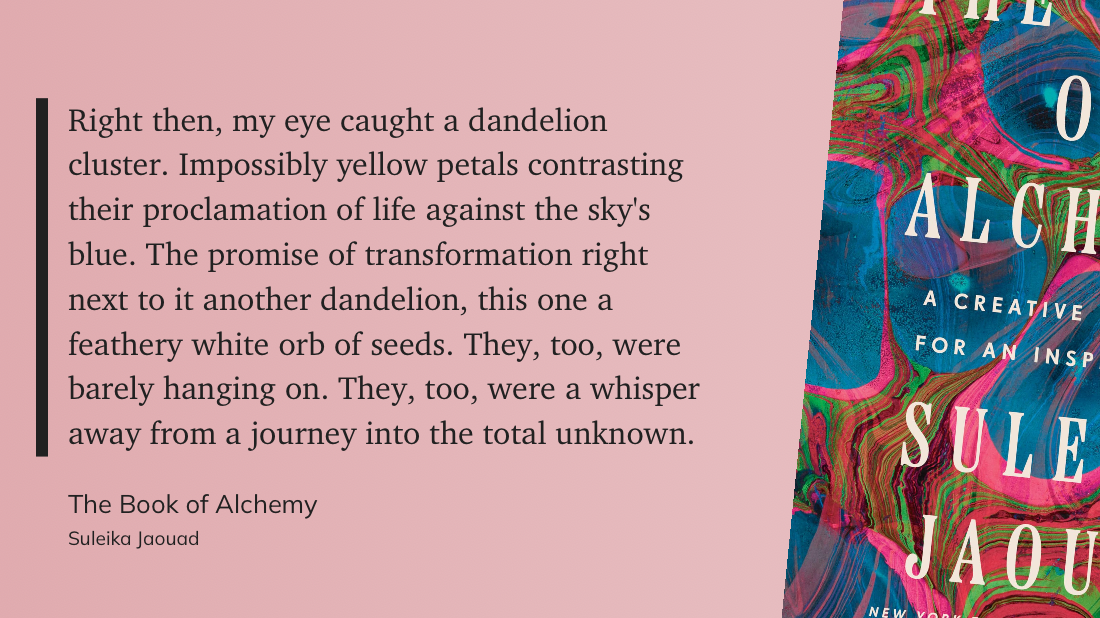
Modern Reminders
I love getting reminders. I need reminders. Productivity guru David Allen famously said, “your brain is for having ideas, not holding them.” I agree 100%. Luckily, I learned a few decades ago that my life ran better when I got things out of my head and onto paper. Back twenty years ago that meant that I still had to open up my planner to see the reminder I had made for myself. Thankfully, life is easier now.
For instance, many people are familiar with and use products such as Apple’s Reminders app to help them offload important details and keep their schedules from falling apart. For whatever reason, that particular option never worked for me, even though I am all in on the Apple ecosystem. It goes to show that we are unique and that what works for several million others, might not work for us.
Appointments and due dates aren’t the only things I want to be reminded of, though. I also want to be reminded of my values, my long term goals, and, as an educator, my philosophy of teaching and learning and what best practices are. Indeed, this is why religious people attend services regularly (or, are supposed to anyway); the spaced repetition helps us remember more deeply what is important. It works for teenagers in high school and it works for adults, too.
One thing I always thought would work for me would be to have a card deck with important reminders on them. I imagine I could keep them at my desk, or in my car, or in my bag, and every day I could shuffle up the deck and be reminded of a bespoke idea that would be great to review again. Being a nerd, I came up with a list of 60 reminders to help me be true to myself. I also came up with 60 reminders about teaching that I wanted to remind myself about on a regular basis. However, instead of manufacturing two physical card decks, I have discovered I can use the new Daily Pulse email option for ChatGPT Plus subscribers to have Chat go into my two lists in Notion and randomly remind me of two ideas via a morning email. Pretty cool. Now, every morning at 6 I get an email from ChatGPT that is tailored specifically to me and what I want to be reminded about before I start my day. I realize some people are wary of AI, but this sort of use case is exciting to me.
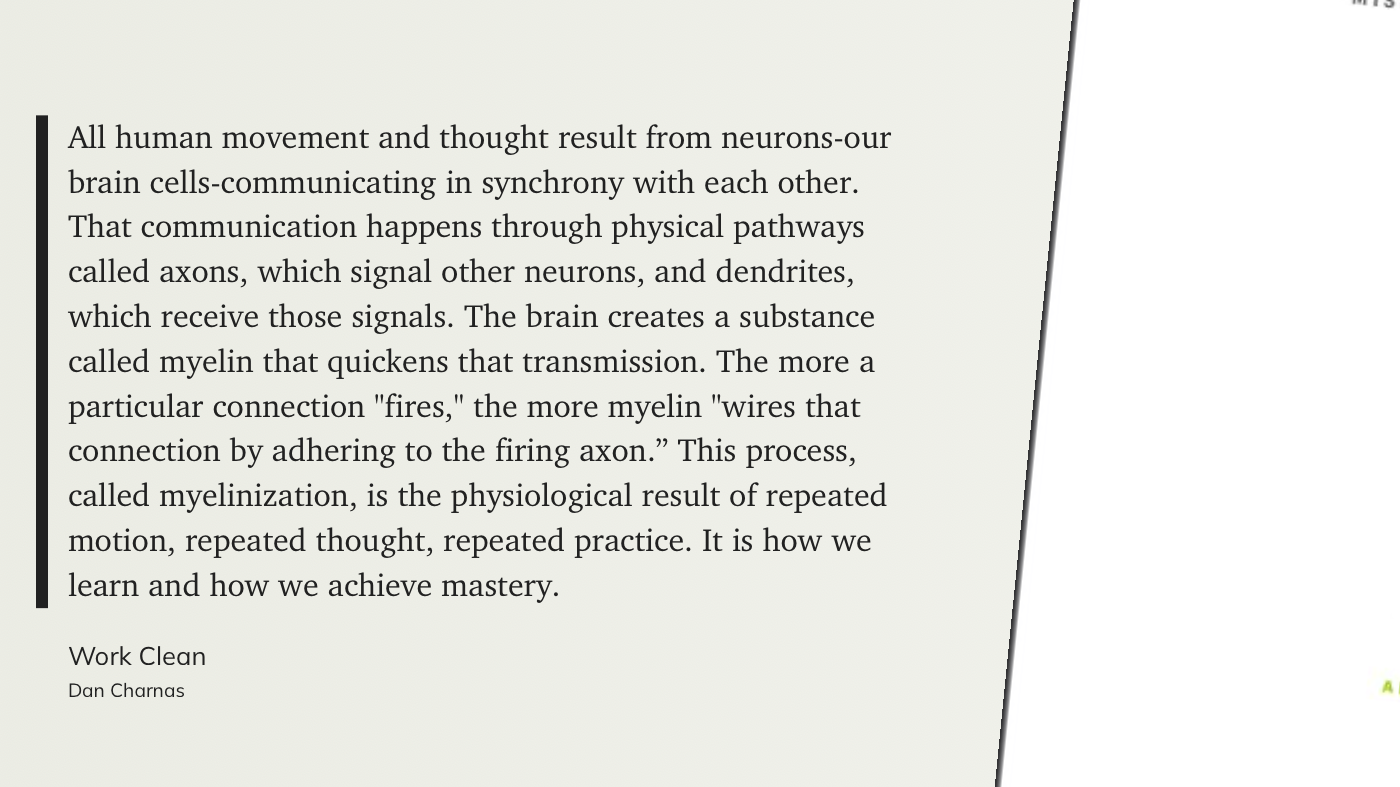
They Can't Scroll Us Away
One of the hardest parts of teaching is covering topics that don’t naturally interest most 16- and 17-year olds. Some folks, mostly those that aren’t actually trying to educate young people, claim that the job of teachers is to make topics ‘interesting.’ This sort of cant grates. The fact is, sometimes young people need to be made aware of realities that—on a Tuesday afternoon in October—they won’t easily engage with. This has always been a dilemma for teachers (portrayed humorously by SNL back in 1992), but it is made even more problematic in the Age of Handheld Distraction. Teens today are used to watching a short video on their smartphones and scrolling past it within seconds if it doesn’t capture their interest. And teachers are not entertainers. Students can’t scroll us away.
The quote below by educator Peps Mccrea resonated with me because it’s true and because it isn’t something teachers hear all that often. If math was intrinsically interesting to 8 year olds, schools wouldn’t be needed. Indeed, algebra is not always a ‘magnet of attention’ for most people, kids or otherwise.
In my case, I recently taught Brutus No. 1, the most famous of the Anti-Federalist arguments against the ratification of the Constitution. It was written in 1788. It comes off as stilted to the modern reader. It is—Hard. To. Read. Of course, the arguments Brutus made about an overpowerful federal government ruled by a strongman is super relevant to teenagers growing up in Portland, Oregon at the moment. That depressing fact of life today helps make the reading relevant. But the point remains: it is not necessarily interesting (as evidenced by the fact that the vast, vast majority of Americans have no idea a) what Brutus’ arguments were and b) who the Anti-federalists were). Indeed, those who do know it most likely learned it in school.
So, the dilemma remains. We have to teach topics that aren’t always going to interest students, that aren’t natural ‘magnets of attention.’ The art of teaching–the perpetual challenge–is figuring out how to make even the dullest topics come alive for as many students as possible.
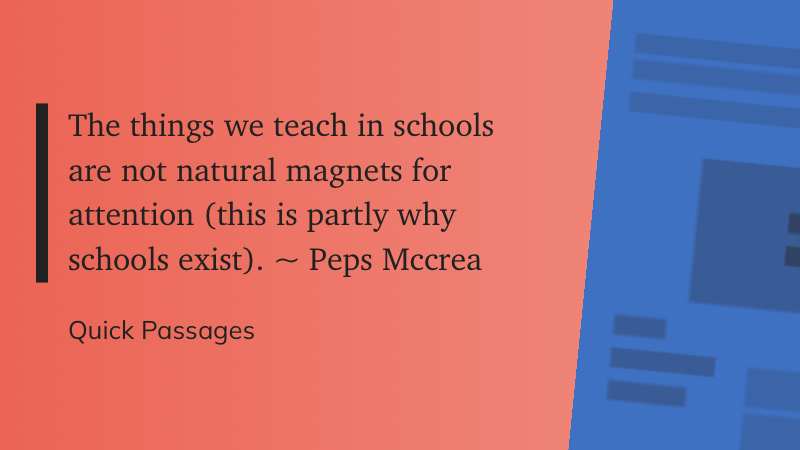
Get Into What Interests You
On the way home from work today I had a great chat with one of my oldest and best friends. He was giving me props for blogging, even if ultimately very few people read my posts. I explained I was mostly doing this for myself as a natural outgrowth of my interest in reading and writing. I told him I was enjoying the new habit of trying to post something every day. He shared that he is getting back into Brazilian jujitsu…at 55! He was finding it very rewarding. He also shared his newfound love of Dua Lipa. He knows it is a bit off brand for him, but we both agreed that at this point in our lives we have stopped giving shits about this sort of thing. To paraphrase Mr. Garcia, “we love what we love and we want it that way.” That means he’s got two Dua Lipa concerts to enjoy next week in Seattle. Good for him.
Twenty minutes after our talk I came across the quote below in the excellent book Do/Interesting, which reinforced what we agreed on. Sweet serendipity!

A Beautiful Sentence Written by Zora Neale Hurston
Sarah Bakewell’s excellent book Humanly Possible is a great history of humanism. It is a history book, but it also is a book about a philosophy. Zora Neale Hurston was a writer I was first introduced to in college, when I was assigned her book Their Eyes Were Watching God. Little did I know at the time that Hurston was a free-thinker, which is why this quote showed up in Bakewell’s book. I thought it was both a beautiful sentence and a beautiful sentiment as soon as I read it. No need to make things up when reality is amazing enough.
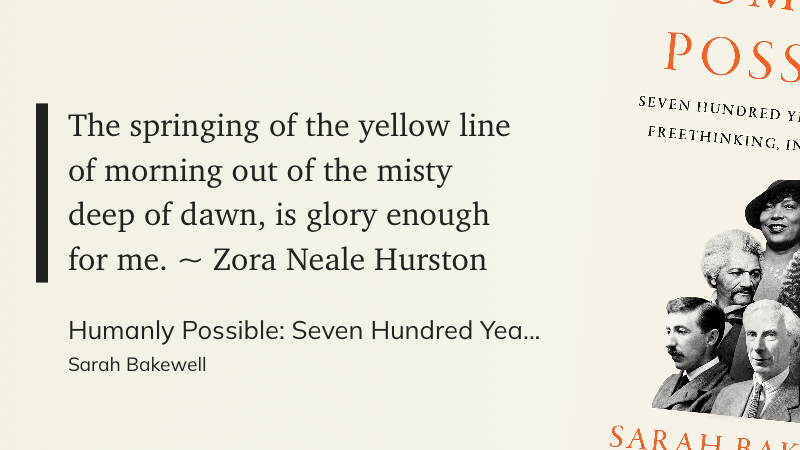
Rush is My Jam Show #7
Rush fans were surprised today with the news that Geddy and Alex are going to go on a relatively short tour in 2026 as Rush, with an amazingly talented drummer and even a keyboard player, allowing Geddy to focus on playing bass and jumping around as only Geddy does. Certainly some will disapprove, but I am not one of them. The Rush catalog is absolutely filled with amazing tunes. This is why I fantasize about their concerts for kicks! Here’s to the chance for a tour with different tunes each night! Here’s fantasy show #7, replete with 4 tunes that haven’t shown up yet. Natural Science set closer? Yes please!

A Great Way to Start a Book
I often come across sentences that I really like. This is going to be a recurring post-theme moving forward. This first selection isn’t beautifully written, but it is a great way to start a book, especially a self-help/pop-psychology book.
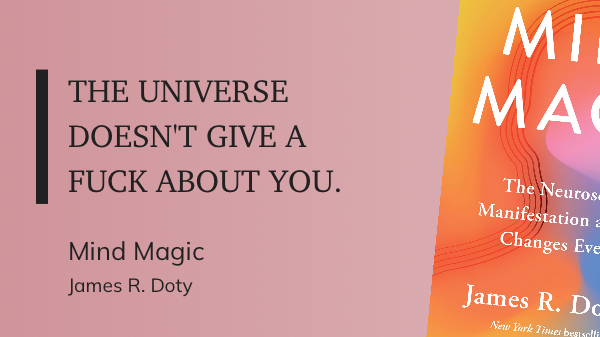
Music that Motivates
I came across this systematic review of how music impacts motivation via Arnold’s Pump Club newsletter. The gist of the review is that music very much does increase human motivation, which in turn leads to better outcomes for people. I think most of us know this through personal experience. Throughout my life I most often deploy music as a tool to increase motivation when it comes to exercise, which I normally don’t find fun. Not surprisingly, this list is heavy on the metal.
Here are some of my go-to tunes to get me going. In the case of these songs, it is definitely a combination of the both the music and lyrics that fire me up.
Ten Years Gone
Back in the spring I pulled the trigger on an Airbnb in beautiful little Sisters, Oregon for the first weekend in October. My wife was going to be heading to the southwest for a Dharma Celebration (as she loves to do!) and I figured early October would be a good time to take a three day weekend not too far from home. I poked around on the home rental website and settled on a cool looking little cabin just west of town. After booking it, I realized that the place looked familiar. I went back and looked at the pics and sure enough, it was the same place I stayed in briefly in July 2015 when we were in town to see Phish in Bend at what is now called the Hayden Homes Amphitheatre. The place had been slightly renovated, but the floor of the kitchen gave it away because I have a great pic of my kiddo that is on my computer screensaver carousel, with the unique floor very visible. Looking at the pics on the website, it was clear it was the same place.
In 2015, we didn’t get to spend quite as much time at the cabin as we had planned due to the fact that my car broke down on the way to the show, which necessitated us going straight into Bend to get the car fixed, instead of to the cabin to chill. The shows were super fun though!
Now, ten years are gone and my daughter and I are back and enjoying a deep hang. It is a different time of year, we are both in different chapters in our lives (she wasn’t even 2 last time we were here and doesn’t remember much at all), but the joy of travel, as well as the view out the window is still just as nice.

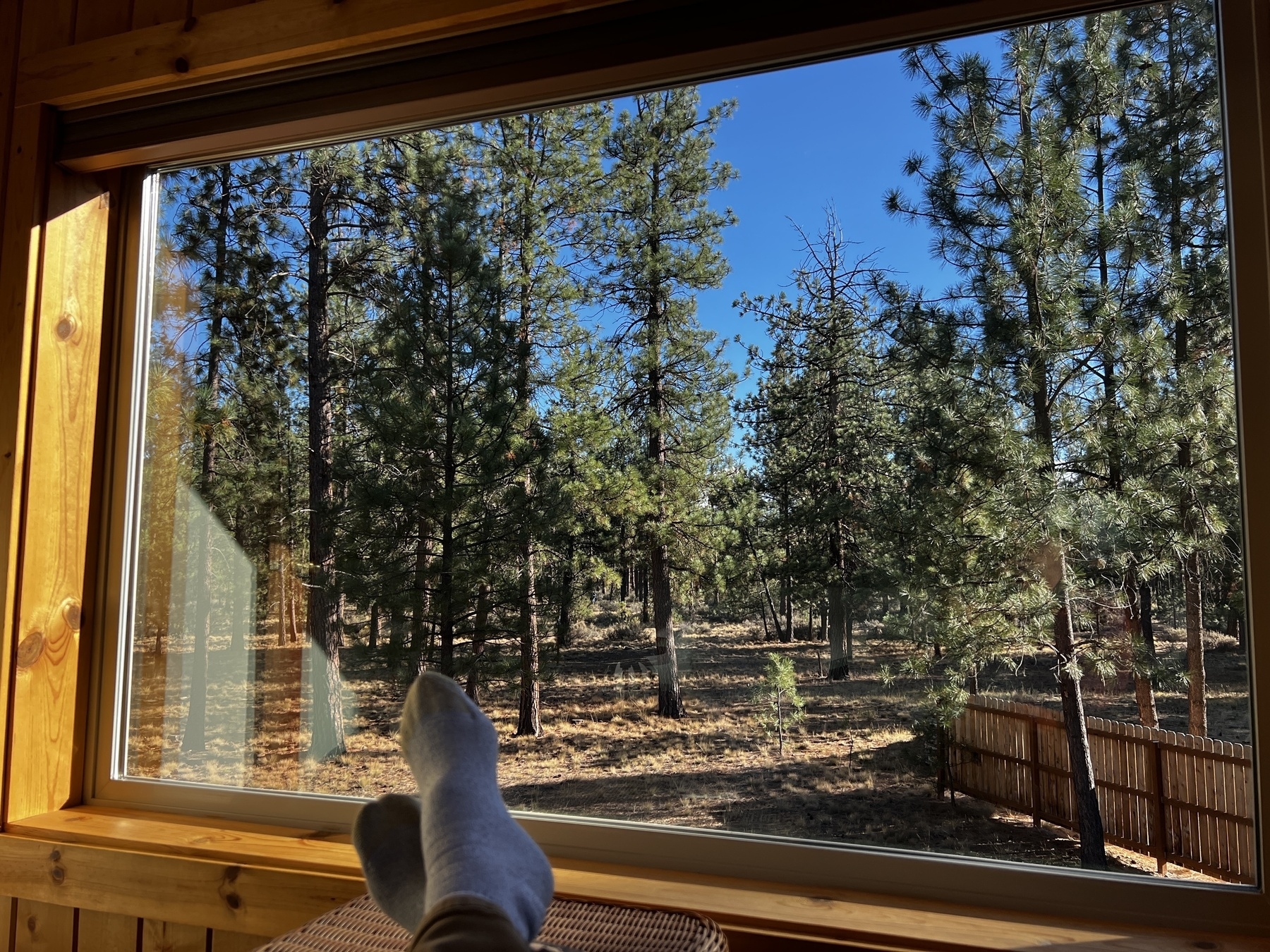
5 Recommendations
An open source, native ambient sounds app for Mac that features high-quality audio for 14 carefully curated ambient sounds, ability to save your own presets, and more.
- Workspaces email newsletter
I am interested in how people do what they do, especially people that work with their minds. That means I have a weird interest in people’s desk spaces. This newsletter satisfies.
My fellow Gen Xers and I were lucky to grow up with Ozzy and his music. Recently, in the wake of Ozzy’s death, the amazing Brass Against folks offered up this killer rendition of No More Tears. Michael Palmisano’s reaction is awesome too. His enthusiasm is genuine and easy to connect with.
Arnold’s Pump Club newsletter is great because the info is solid and the vibe is super positive. The world needs more Arnold energy.
- Door Harp, by Michael Houser
IYKYN. ‘Panic’ delivers a beautiful, mellow album that has strong fall vibes for me. An oldie but a goodie.
31 Years Ago in Boston ⚡️
31 years ago today I may have seen one of the last great Dead shows. This show was the fourth night of a six night run at the old Boston Garden. My friend JC scored tickets to the shows on the 1st and 2nd of October. He managed to get us seats center stage about 12 rows back. The were the best seats I ever had for a Grateful Dead concert. The night after, we were behind the stage! The Dead ticket folks must have figured since they gave us top tier seats for the first night, we could rough it behind the stage for the next show.
This was my first time on the east coast, too. A good friend that I had known since middle school was attending law school at Boston College so we had a free floor to crash on. When we got to our seats, we were blown away. Little did we know that the show would be top notch as well. Not only was the set list packed with great tunes, but the So Many Roads was one of the best performances of the song ever, with Jerry singing his heart out at the end. His passion was made all the more poignant because he looked so frail and old and 1994 was not a very good year overall for the Dead’s playing. Jerry, typical of that era, flubs some lyrics throughout the night, but his guitar sounded crisp and clean and being so close, the night was one I won’t ever forget.
The next night was super fun too. It was the first time we’d ever seen a show from behind the stage and we got to have fun watching the audience, which was extremely entertaining. Another high school friend was there with her future husband, and if memory serves we saw them briefly before the show. Pretty sure that was their only Dead show.
From the land of the midnight sun
Where the ice blue roses grow
Along those roads of gold and silver snow
Howlin' wide or moaning low
So many roads I know
So many roads to ease my soul
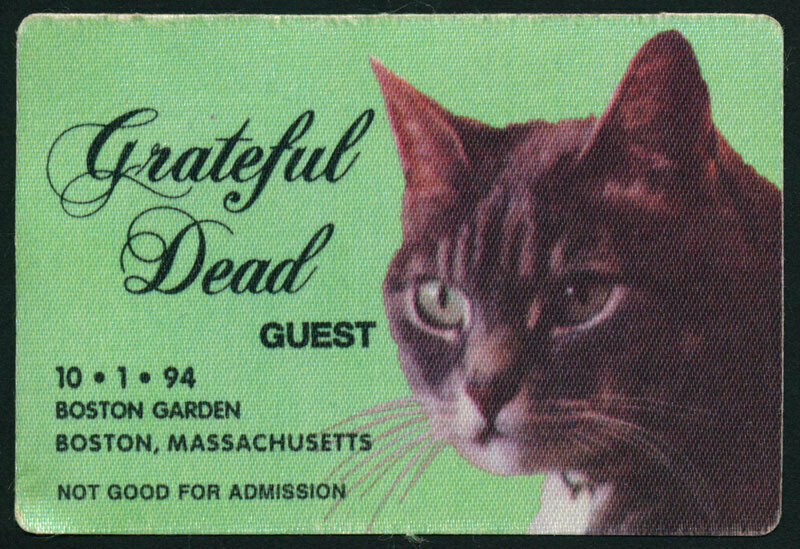
Beijing and other Ancient Cities
I am fascinated by the great cities of the world. I’ve been fortunate enough to visit some amazing metropolises. Unfortunately, I haven’t yet been to Beijing, today one of the world’s largest and most modern cities. I mention Beijing in particular because of the quote below, that I saved while reading Jack Weatherford’s popular book Genghis Khan and the Making of the Modern World. Before coming across this I didn’t know that Beijing was also the Mongol capital ‘Khanbalik.’ A little further research indicates that people have been living at the site of Beijing for more than 1500 years. This history reminds me of Mexico City as well, as the modern megacity was built on the ruins of the Aztec capital Tenochtitlan, thought the Aztec didn’t settle in central Mexico until the 1200s.
For what it’s worth, here are the world’s longest inhabited cities:
- Jericho, West Bank
- Damascus, Syria
- Aleppo, Syria
- Byblos, Lebanon
- Argos, Greece
Other cities sometimes included on such lists, all with evidence of very long habitation histories, are Plovdiv (Bulgaria), Athens (Greece), Sidon (Lebanon), and Varanasi (India).
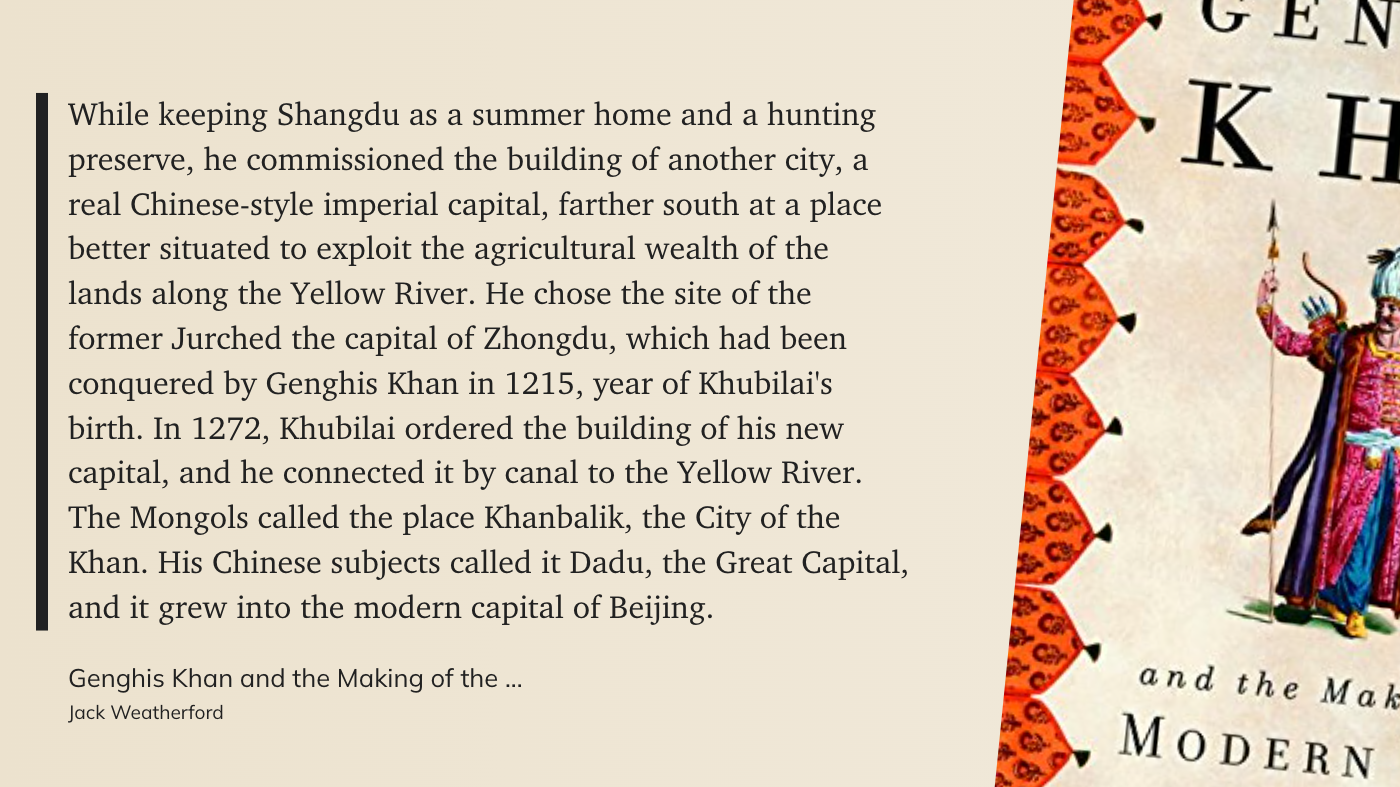
Current Stack
I finished four books this month and am currently reading 7, plus the one high school Human Geography text. As I mentioned in a post last week, I bailed on my one novel and took up book two of The Wheel of Time series in its place. So far I’m glad I did. The two books I find myself reaching for the least right now are The Rediscovery of America and The Age of Surveillance Capitalism. Nevertheless, books that I lag on usually grip me at some point and I am able to make significant progress quickly. That is happening right now with Gore Vidal’s memoir Palimpsest. My quickest read right now is the excellent Garcia biography.
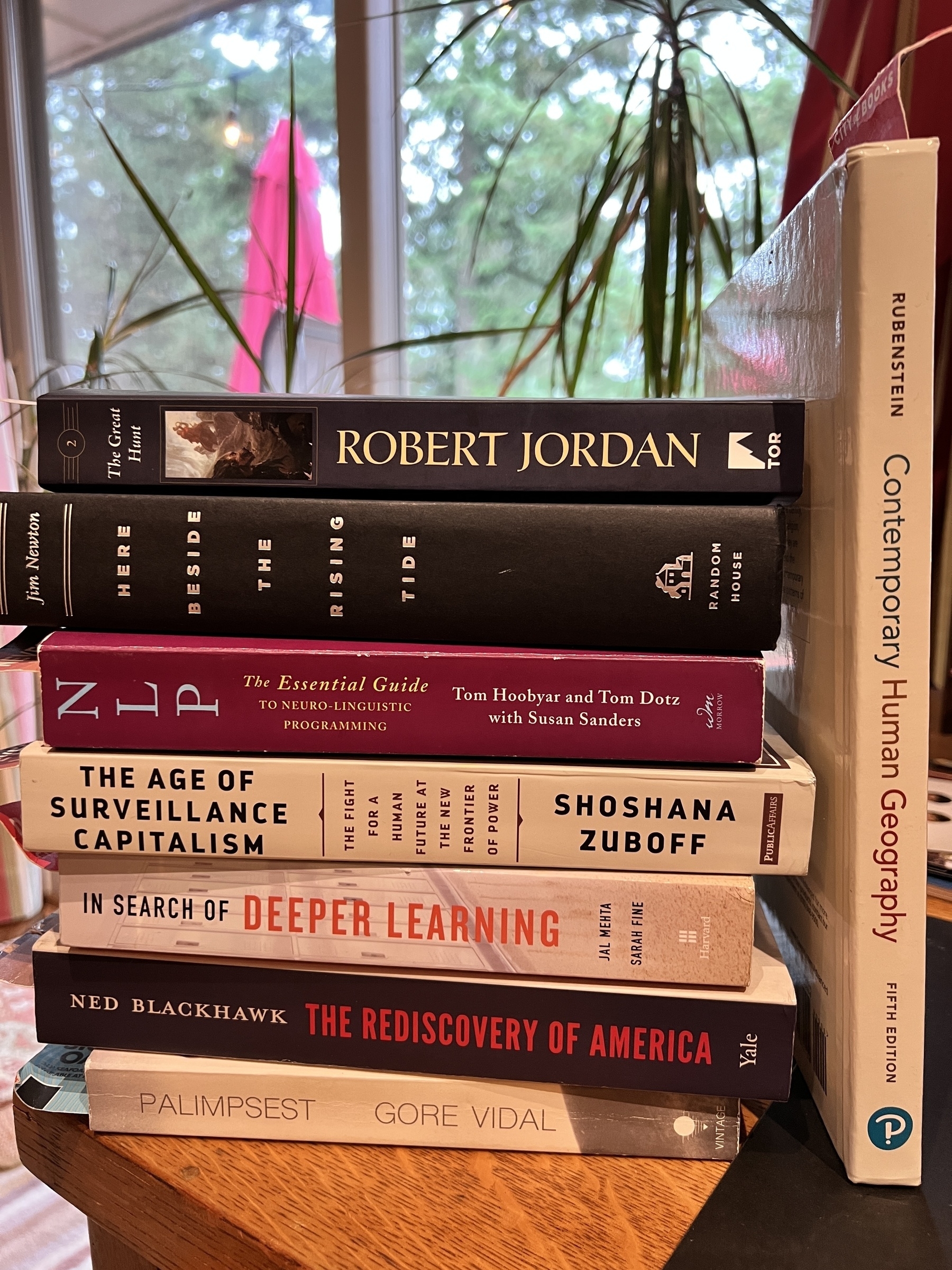

Three Ways I Use Notion
For years, I used Evernote as my digital brain, but now I am a devoted Notion user. I use other tools like the Google Suite and Apple Notes, but my day-to-day life admin happens in Notion. Many people don’t need tools like this, but I find powerful apps like Notion both immensely helpful and, dare I say, fun to use. I thought I’d share a few examples of how I use Notion.
One way I use Notion is for keeping a Daily Note, a productivity idea popularized initially by Roam Research. There are a ton of things I try to do every day, such as meditating, taking my vitamins, reading an entry from The Daily Stoic, and having my daughter share something with me that she is grateful for. For minds like mine, lists are helpful. I use a Daily Note template in Notion that I can reproduce each morning that contains a list of all the things I want to get done every single day. Obviously, as the day goes on I check ‘em off the list. I’m near a computer all day so this isn’t hard. At the end of the day, the Daily Note is a record of what I accomplished. I have other things in the Daily Note as well, including the top three To Dos that are unique to that day. I also have links to other heavily used Notion pages, like my ‘second brain’ note collection or my miscellaneous brainstorms. Notion makes their pages heavily customizable so I have dialed in my Daily Note to suit my personality.
Another way I use Notion is to save all my brainstorms. Like most people, every once in a while I need to do a braindump and get everything out of my head. With Notion I can save all these brainstorms and attach them to my Daily Note and add tags so they are visible in other parts of my Notion. Again, do you need this to be productive? A lot of people would say no; but it definitely helps me.
A third way I use Notion is for keeping trip notes. When I have a trip planned, I open a new trip template (on my Travel page in my Personal Dashboard) and I’m ready to drop in screenshots of hotel and plane reservations, along with my packing lists and other important notes. Having a system helps minimize the damage my natural forgetfulness can do.
There are a ton of other ways I use Notion and I’ll likely share more in the future. There are other apps that do what Notion does, like Capacities and Craft, but Notion continues to work well for me.
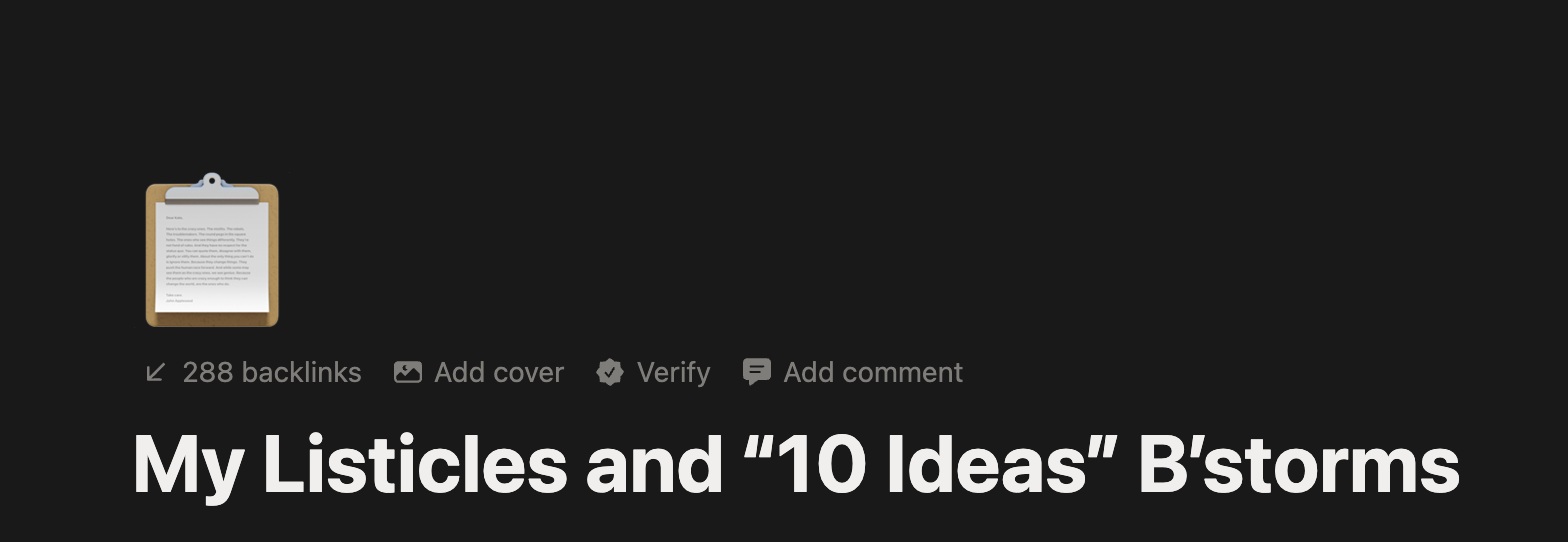
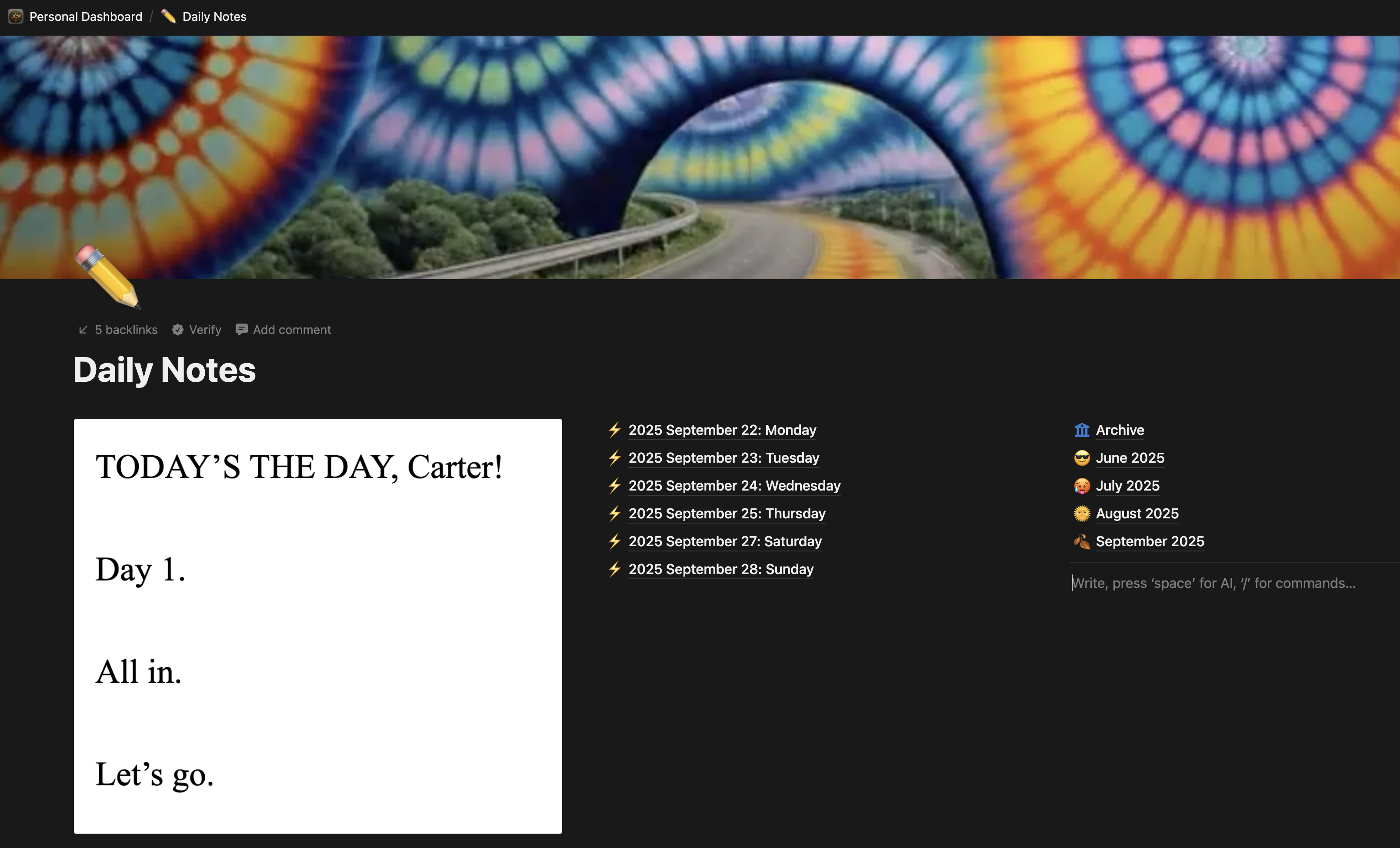

It is How You Live Your Life
The Jerry Garcia biography I am halfway through is enjoyable. Rather than a straight biography of Garcia, it’s really the story of Jerry and the times he lived through. The author spends half the book on his youth and the 60s. But hey, as a history nerd, I’m loving all the historical context.
During the description of the chaos of 1968 there is a section that mentions Jerry Rubin and the Yippies. The quote below–attributed to Rubin–which I had never heard before, is great and resonates deeply right now in the back half of 2025. I’d amend the idea a bit in the sense that who we vote for does matter quite a bit. However, as Rubin argues, it is so much more than that. It is what you buy, what you invest your money and time in, what types of people you hang out with, where and how you live, and what values you try to live up day in and day out, including what you do to pay the bills. As a social studies teacher, this is an important idea that I think we all want our young people to understand. Rubin’s quote makes the points succinctly and coming across it, I found it to be a powerful reminder.
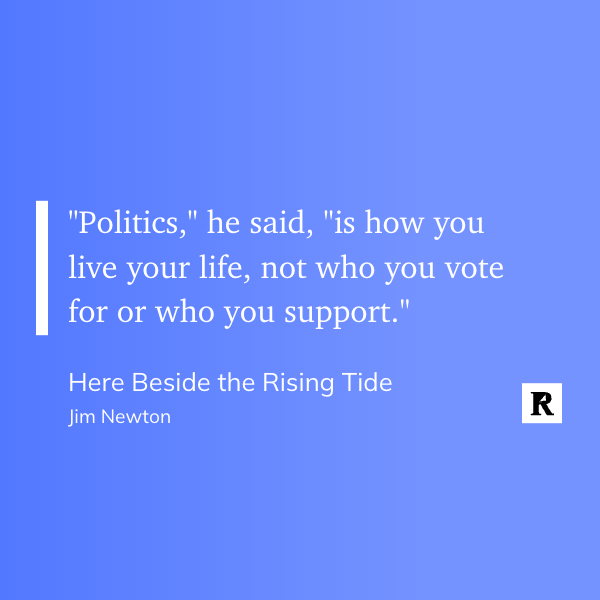
Fall Book Reload
A new season is upon us and I pulled the trigger on 8 new books to add to my TBR collection. This haul touches on many of my interests; football, memoir, writing, foreign policy and economics, and general self improvement. I’ve got to finish one of my current reads before diving into one of these, but I’m pretty sure I’m going to tackle the Zinsser memoir first. Happy days.
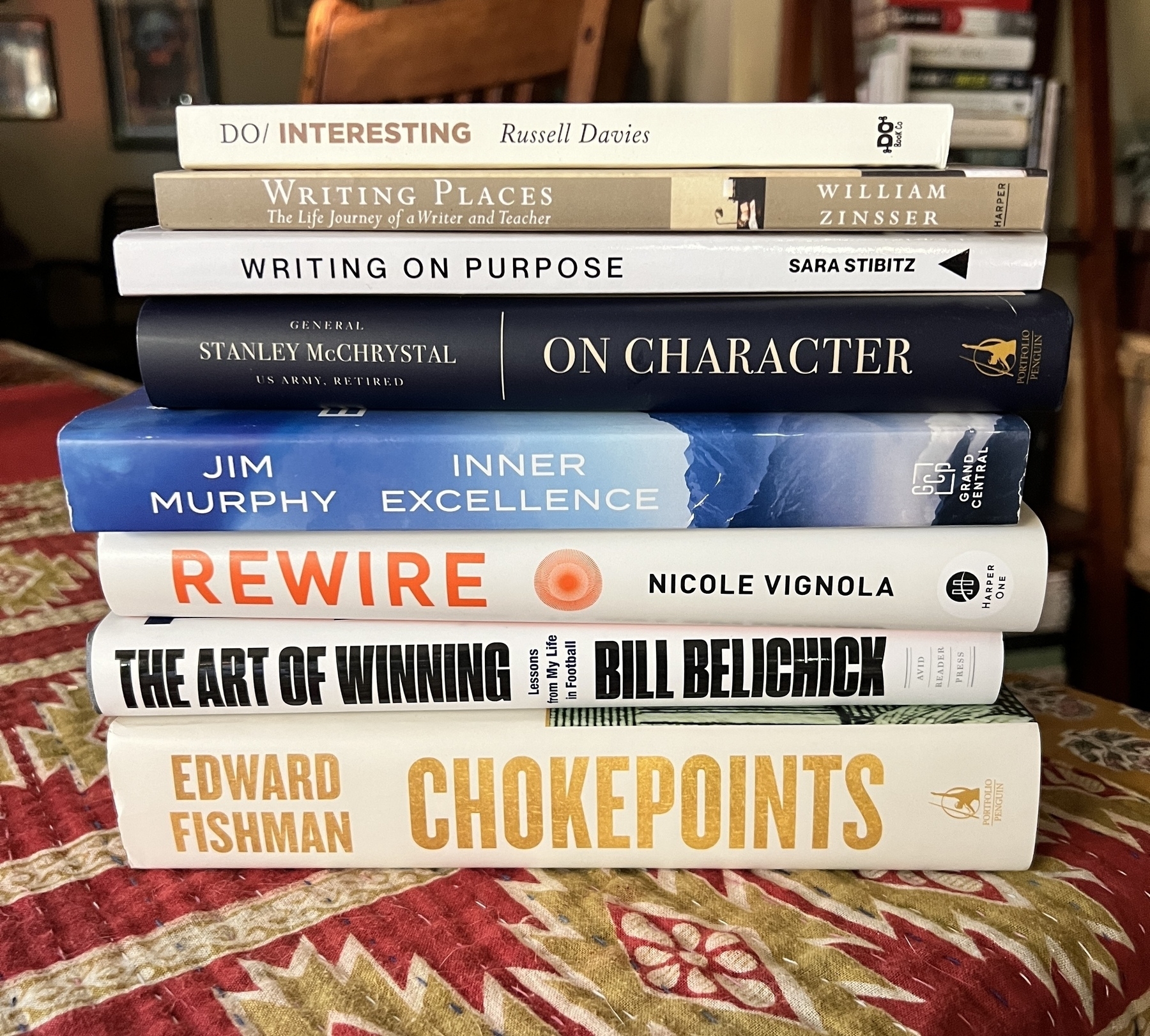

Traffic and the To Don't List
Everyone has heard of a ‘to do list.’ An idea that has been floating around amongst productivity nerds for a while is the related notion of a ‘to don’t' list. Today I was stuck in traffic on my way home and I was reminded of this idea. Having the same commute for 25 years has led me, unfortunately, to be a bit impatient driving home. I tend to get easily frustrated in traffic and today was typical in that regard. However, I eventually remembered (admittedly, it took awhile) the uselessness of getting angry at traffic, as my feelings one way or another were going to have zero effect on my ability to get home any faster. The advice of Shantideva and the Stoics came to mind. Indeed, “don’t get upset about things you can’t control” became my mantra today and that led me to try and think of other behaviors I should keep atop my personal ‘to don’t’ list. Here a few more that came to mind:
-
Gossip
-
Compare myself to others
-
Doom scroll the news
-
Ruminate about the past
-
Think rigidly or ideologically
Easier said than done for sure, but definitely worth the effort.

Rush is My Jam Show #6
I would have loved to see Rush open a show with Out of the Cradle! Lots of other great later Rush in that first set. Chemistry is another great tune that didn’t get played enough over the years. The Camera Eye makes its second appearance as a set two opener. All in all, another great night on the imaginary Rush tour in my head.

Quitting Time
I finish the vast majority of books that I start. However, every once in a while I find myself reading 100 pages (or thereabouts) into a book that isn’t interesting. For me, it almost always happens to be a novel. I used to feel the weight of the sunk cost fallacy and felt like I should finish every book I started. However, as I get older I realize that logic doesn’t work for me. Life is too damn short to read just for the sake of reading. I’ve got to be getting something out of the book.
Yesterday, I gave up on Kim Stanley Robinson’s The Ministry for the Future. For those who are interested in science and climate change, I recommend the book. It is well written and is creatively organized, but I wasn’t digging it. Indeed, I only made it through page 88 on this one. I’ll keep it around because perhaps in a different season of life, the book might resonate more. However, since I always try to have one novel going, I immediately started the second book in The Wheel of Time series by Robert Jordan.
